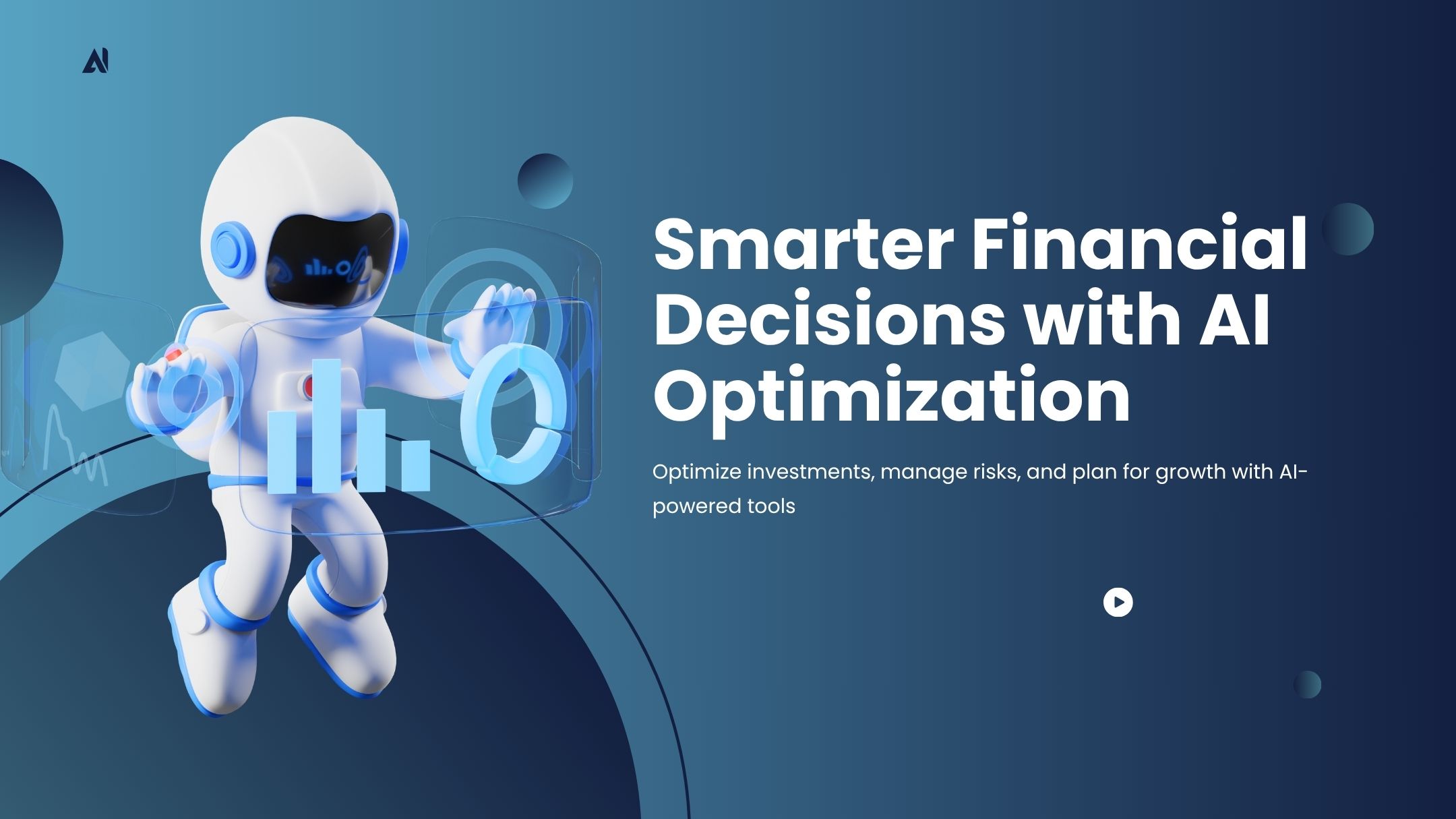In an era of unprecedented global change, the power generation industry finds itself at the epicenter of a profound transformation. As we progress further into the 21st century, the sector faces a complex array of challenges that demand innovative solutions. The ever-increasing global appetite for electricity, coupled with the urgent need to transition towards cleaner, more sustainable energy sources, has created a perfect storm of complexity for power generation companies. Traditional approaches to managing these multifaceted issues are rapidly becoming obsolete, paving the way for more sophisticated, data-driven methodologies.
Enter the world of advanced optimization techniques, spearheaded by powerful tools like IBM’s CPLEX and the broader field of mathematical optimization. These cutting-edge approaches are not merely incremental improvements to existing processes; they represent a paradigm shift in how the power generation industry tackles its most pressing challenges. From balancing supply and demand in real-time to planning long-term investments in a rapidly evolving technological landscape, optimization techniques are proving to be indispensable allies in the quest for a more efficient, reliable, and sustainable energy future.
The Evolving Landscape of Energy Production: A Multifaceted Challenge
At the heart of power generation lies a fundamental challenge that has grown exponentially more complex in recent years: the need to match supply with demand instantaneously. This delicate balancing act has been further complicated by a host of factors that are reshaping the energy landscape.
First and foremost, the proliferation of smart devices and the rise of the Internet of Things (IoT) have led to more unpredictable load profiles. Consumers are no longer passive recipients of electricity; they are active participants in a dynamic ecosystem where energy consumption patterns can shift rapidly based on a myriad of factors. The increasing adoption of electric vehicles, for instance, introduces new peaks in demand as drivers plug in their cars after work, creating challenges for grid stability and capacity planning.
Moreover, the integration of renewable energy sources, while essential for sustainability, has introduced significant variability into the supply side of the equation. Wind and solar power, by their very nature, are intermittent and weather-dependent. This variability necessitates more sophisticated forecasting techniques and flexible backup generation capabilities to ensure a stable power supply.
The challenge of maintaining grid stability has also grown more complex as the generation mix evolves. Traditional power systems were designed around large, centralized fossil fuel plants with predictable output. The shift towards a more distributed generation model, with a mix of renewables, smaller gas plants, and energy storage systems, requires more advanced control mechanisms to maintain frequency and voltage stability.
Resource Allocation and Asset Management: A Delicate Balance
Power generation companies must navigate a complex web of decisions regarding resource allocation and asset management. The process of unit commitment – determining which generating units to operate and at what output levels – has become increasingly intricate. It’s no longer simply a matter of meeting demand at the lowest cost; operators must now consider a host of additional factors, including emissions limits, ramp rates, and the integration of intermittent renewable sources.
Maintenance scheduling presents another critical challenge. Companies must strike a delicate balance between minimizing downtime and maximizing asset lifespan. This involves not only planning routine maintenance but also predicting and preventing potential equipment failures through advanced analytics and predictive maintenance techniques.
Fuel procurement and inventory management add another layer of complexity to the resource allocation puzzle. Fluctuating fuel prices, supply chain disruptions, and the need to maintain adequate reserves while minimizing storage costs all contribute to the challenge of optimizing fuel strategies.
Navigating the Regulatory Maze and Environmental Imperatives
The power generation sector operates within an increasingly stringent regulatory framework, shaped by growing environmental concerns and the global imperative to combat climate change. Companies must navigate a complex landscape of emissions regulations, renewable energy mandates, and evolving carbon pricing mechanisms.
Meeting emissions limits has become a major challenge, particularly for operators of fossil fuel plants. This involves not only reducing greenhouse gas emissions but also managing other pollutants such as sulfur dioxide and nitrogen oxides. The implementation of carbon capture and storage technologies, while promising, introduces new operational complexities and cost considerations.
Renewable energy mandates present both opportunities and challenges for power generation companies. While these policies drive investment in clean energy technologies, they also require careful planning to integrate variable renewable sources into the existing grid infrastructure. Companies must balance the need to meet these mandates with the imperative to maintain grid reliability and manage costs.
Carbon pricing mechanisms, whether in the form of cap-and-trade systems or carbon taxes, are reshaping the economics of different generation technologies. These policies create new market dynamics that power generation companies must factor into their operational and investment decisions.
Need CPLEX Training? Enroll for
Market Dynamics and Economic Challenges: Navigating Uncertainty
The power generation industry operates in an environment of constant flux, characterized by volatile market conditions and intense competitive pressures. Companies must navigate fluctuating fuel prices, electricity prices, and ancillary service markets, all while maintaining profitability in increasingly deregulated and competitive markets.
Price volatility in fuel markets, particularly for natural gas, can have a significant impact on generation costs and ultimately on electricity prices. This volatility necessitates sophisticated hedging strategies and real-time optimization of generation portfolios to manage risk and maximize profitability.
The structure of electricity markets themselves is evolving, with the introduction of capacity markets, ancillary service markets, and increasing emphasis on demand response programs. These changes create new revenue streams but also new complexities in terms of market participation and optimization.
Competitive pressures in deregulated markets have intensified, with generators competing not only on price but also on flexibility, reliability, and environmental performance. This competitive landscape requires companies to continuously innovate and optimize their operations to maintain market share and profitability.
Risk management has become a critical function for power generation companies. This involves not only financial risk management through hedging and derivatives but also operational risk management to mitigate the impact of equipment failures, fuel supply disruptions, and extreme weather events.
Uncertainty in Strategic Planning for Future Energy Needs
Looking beyond day-to-day operations, power generation companies face critical long-term strategic challenges that will shape their future success and the broader energy landscape. These decisions are made all the more difficult by the rapid pace of technological change and the uncertainty surrounding future energy policies and market conditions.
Technology selection is perhaps the most crucial long-term decision facing power generation companies. The choice of which generation technologies to invest in has far-reaching implications for a company’s cost structure, environmental performance, and competitive position. This decision-making process must consider not only current technologies but also emerging options such as advanced nuclear reactors, hydrogen-based generation, and next-generation energy storage systems.
Demand forecasting over long time horizons is another critical challenge. Companies must anticipate not only overall growth in electricity demand but also shifts in consumption patterns driven by factors such as increased electrification of transportation and heating, changes in industrial energy use, and the impact of energy efficiency measures.
Policy uncertainty adds another layer of complexity to long-term planning. The energy sector is heavily influenced by government policies, from renewable energy incentives to carbon pricing mechanisms. Companies must develop strategies that are robust to a range of possible policy scenarios, balancing the need for flexibility with the imperative to make timely investments in new capacity.
Want to Buy CPLEX? Visit
Grid Integration and the Challenges of a Changing Power System
The evolving nature of power systems introduces new challenges related to grid integration and management. The traditional model of large, centralized power plants serving passive consumers is giving way to a more distributed, dynamic system with bidirectional power flows and active participation from consumers.
Transmission bottlenecks have become a major issue as the geography of power generation shifts. The best locations for renewable energy resources, such as wind-rich areas or sunny deserts, are often far from major load centers. This creates challenges in transporting power efficiently and reliably over long distances, necessitating investments in transmission infrastructure and sophisticated congestion management techniques.
The integration of distributed energy resources, such as rooftop solar panels and small-scale energy storage systems, is reshaping the distribution grid. These resources can provide benefits in terms of reduced transmission losses and increased resilience, but they also introduce new complexities in terms of voltage management and system coordination.
Smart grid technologies, including advanced metering infrastructure, communication networks, and control systems, are enabling more sophisticated grid management techniques. These technologies provide unprecedented visibility into grid conditions and enable real-time optimization of power flows. However, they also introduce new cybersecurity risks and require significant investments in data management and analytics capabilities.
Harnessing the Power of CPLEX and Mathematical Optimization
Given the complexity and interconnectedness of these challenges, it’s clear that traditional, siloed approaches to decision-making are no longer sufficient. This is where advanced optimization techniques, exemplified by tools like IBM’s CPLEX and the broader field of mathematical optimization, come into play.
CPLEX is a high-performance mathematical programming solver that uses cutting-edge algorithms to solve large-scale optimization problems. It excels at handling complex, multi-variable problems with numerous constraints – precisely the type of challenges faced by the power generation industry.
Mathematical optimization, also known as mathematical programming or operations research, provides a framework for modeling complex systems and finding optimal solutions to multifaceted problems. It allows decision-makers to consider multiple objectives simultaneously, balance competing priorities, and identify solutions that might not be apparent through intuition or experience alone.
Applying CPLEX and Advanced Optimization Techniques to Power Generation Challenges
The application of CPLEX and mathematical optimization to power generation challenges is wide-ranging and profound. Let’s explore some specific applications in more detail:
Unit Commitment and Economic Dispatch: This classic power system optimization problem involves determining which generating units to operate and at what output levels to meet demand at the lowest cost while satisfying operational constraints. It can be modeled as a mixed-integer linear programming (MILP) problem, with binary variables representing the on/off status of each unit and continuous variables representing power output levels.
The objective function typically aims to minimize total operational costs, including fuel costs, start-up costs, and shutdown costs. Constraints include power balance equations to ensure supply meets demand at each time interval, minimum up and down time constraints for thermal units, ramp rate limits, and reserve requirements.
CPLEX’s advanced branch-and-cut algorithms are particularly well-suited to solving these large-scale MILP problems efficiently, often incorporating techniques such as cutting planes and heuristics to improve solution times.
Maintenance Scheduling: Optimizing maintenance activities is crucial for maximizing asset reliability while minimizing costs. This can be modeled as a large-scale integer programming problem, where decision variables represent the timing of maintenance activities for each asset.
The objective might be to minimize the total cost of maintenance while maximizing system reliability. Constraints include resource limitations (e.g., availability of maintenance crews and equipment), outage window restrictions, and system reliability requirements to ensure sufficient generation capacity is always available to meet demand.
Given the combinatorial nature of this problem, CPLEX’s ability to handle large-scale integer programs becomes crucial. Techniques such as Benders decomposition may be employed to solve particularly large instances of this problem efficiently.
Renewable Energy Integration: The intermittent nature of renewable energy sources like wind and solar introduces significant uncertainty into power system operations. Stochastic optimization techniques are often employed to address this challenge.
The objective might be to maximize the utilization of renewable energy sources while minimizing overall system costs and ensuring reliability. This involves modeling probabilistic constraints on renewable energy availability, energy storage constraints (if applicable), and grid stability requirements.
CPLEX can be used in conjunction with scenario generation techniques to solve these stochastic optimization problems, allowing decision-makers to develop robust strategies that perform well under different renewable generation scenarios.
Long-Term Capacity Planning: This strategic problem involves determining the optimal mix of generation technologies to invest in over a long planning horizon. It can be modeled as a multi-period, mixed-integer programming problem.
The objective is typically to minimize the net present value of investment and operational costs over the planning horizon. Constraints include demand satisfaction requirements for each period, budget limitations on capital investments, technology-specific constraints (e.g., construction lead times, operational characteristics), and policy constraints such as emission limits or renewable energy targets.
CPLEX’s ability to handle large-scale, multi-period problems becomes crucial in solving these complex planning models. Techniques such as rolling horizon approaches may be employed to make the problem more tractable for very long planning horizons.
Grid Congestion Management: Managing transmission constraints is crucial for maintaining system reliability and minimizing costs. This can be modeled as an optimal power flow problem, often formulated as a non-linear programming problem.
The objective might be to minimize generation costs while respecting transmission constraints. Constraints include power flow equations, transmission line capacity limits, bus voltage limits, and generator output constraints.
While CPLEX is primarily designed for linear and integer programming, it can be used in conjunction with specialized power system optimization tools to solve these non-linear problems, often employing linearization techniques or decomposition methods.
The Business Impact of CPLEX and Optimization in Power Generation
The application of CPLEX and mathematical optimization techniques in power generation extends far beyond technical problem-solving. It has profound implications for business operations, strategy, and competitiveness.
Enhanced Operational Efficiency: By optimizing unit commitment and economic dispatch, power generation companies can achieve significant improvements in operational efficiency. This leads to reduced fuel consumption, as generating units are operated at their most efficient points. Start-up and shutdown costs are minimized through better planning of unit commitments. Asset utilization is improved, potentially deferring the need for new capital investments.
Cost Reduction and Profitability Enhancement: The implementation of advanced optimization techniques can lead to substantial cost savings. Optimized dispatch can lead to 2-5% savings in fuel costs, which translates to millions of dollars for large power generation companies. By scheduling maintenance activities more efficiently, companies can reduce overall maintenance costs while improving asset reliability. Better forecasting and optimization can help companies avoid costly penalties for failing to meet contractual obligations or grid balancing requirements.
Improved Risk Management: Mathematical optimization provides powerful tools for managing various types of risks. By incorporating uncertainty into optimization models, companies can develop more robust bidding strategies for energy markets. Stochastic optimization techniques allow for better management of uncertainties related to equipment failures, fuel supply disruptions, and other operational risks. Optimization models can help companies evaluate the impact of potential regulatory changes and develop adaptive strategies.
Enhanced Environmental Performance: As environmental concerns become increasingly central to the power generation industry, optimization techniques offer ways to improve sustainability. By optimizing the generation mix and unit dispatch, companies can minimize their overall emissions while still meeting demand. Advanced optimization techniques enable more effective integration of intermittent renewable sources, supporting the transition to cleaner energy. In regions with carbon pricing mechanisms, optimization can help companies minimize their carbon costs while maintaining profitability.
Improved Strategic Decision-Making: The insights gained from mathematical optimization can inform long-term strategic decisions. Optimization models can help companies evaluate different investment scenarios and make more informed decisions about capacity expansion and technology adoption. By better understanding the dynamics of power markets through optimization, companies can position themselves more effectively in competitive environments. Mathematical optimization allows for efficient scenario analysis, enabling companies to prepare for a range of possible future conditions.
Enhanced Grid Reliability and Resilience: Optimization techniques contribute to improving the overall reliability and resilience of power systems. By optimizing power flows, companies can reduce transmission bottlenecks and improve system stability. Mathematical optimization can help in more efficient provision of ancillary services, enhancing grid reliability. Optimization models can be used to develop more effective strategies for responding to extreme events and quickly restoring power.
Cresco International: Your Partner in Power Generation Optimization
Cresco International, as a trusted IBM partner and a consulting firm specializing in decision optimization and CPLEX, is uniquely positioned to help power generation companies address the multifaceted challenges outlined in this blog. By leveraging our expertise and the power of CPLEX, we can develop customized decision optimization solutions tailored to your specific needs.
Here’s how Cresco International can assist your organization:
Cresco International will work closely with your team to understand your specific challenges and objectives. We will then formulate these problems into mathematical optimization models that accurately capture the complexities of your operations.
Next, Cresco International has extensive experience in implementing and tuning CPLEX to solve large-scale optimization problems efficiently. We will leverage CPLEX’s advanced algorithms and capabilities to deliver high-quality solutions.
Furthermore, we will assist in integrating relevant data from your existing systems and analyzing it to ensure that your optimization models are based on accurate and up-to-date information.
Cresco International can help you address specific challenges such as:
- Unit Commitment and Economic Dispatch: Cresco International can help you optimize your unit commitment decisions, minimizing costs and maximizing efficiency while ensuring grid stability.
- Maintenance Scheduling: Our solutions can optimize maintenance planning, reducing downtime and improving asset reliability.
- Renewable Energy Integration: We will develop strategies to maximize the utilization of renewable energy sources while minimizing costs and ensuring grid stability.
- Long-Term Capacity Planning: Cresco International can assist in making informed decisions about future investments in generation capacity.
- Grid Congestion Management: Our experts can help you manage transmission constraints and optimize power flows.
- Risk Management: We will develop optimization models to help you mitigate various risks, including financial, operational, and environmental risks.
The benefits of partnering with Cresco International include:
- Improved Operational Efficiency: Our solutions can help you reduce costs, increase asset utilization, and enhance overall operational efficiency.
- Enhanced Decision-Making: By leveraging data-driven insights from optimization models, you can make more informed decisions and improve your strategic planning.
- Increased Sustainability: Cresco International can help you integrate renewable energy sources more effectively and reduce your environmental impact.
- Competitive Advantage: Our solutions can help you gain a competitive edge by optimizing your operations and reducing costs.
Cresco International is committed to helping power generation companies navigate the complexities of the modern energy landscape. By leveraging our expertise in decision optimization and CPLEX, we can provide you with the tools and insights you need to succeed in this challenging but rewarding industry.
Conclusion
As we’ve explored throughout this comprehensive analysis, the power generation industry stands at a critical juncture. The challenges it faces – from balancing supply and demand in increasingly dynamic systems to navigating the transition to cleaner energy sources – are more complex and interconnected than ever before. Traditional approaches to decision-making are rapidly becoming obsolete in this new landscape.
CPLEX and mathematical optimization emerge as indispensable tools in this context, offering the ability to process vast amounts of data, consider multiple objectives and constraints simultaneously, and derive optimal solutions that balance competing priorities. These techniques are not just incremental improvements to existing processes; they represent a fundamental shift in how decisions are made in the power generation industry.
The potential benefits of embracing these advanced optimization techniques are immense. From direct cost savings and improved operational efficiency to enhanced environmental performance and better long-term strategic decisions, the impact can be transformative. Companies that successfully leverage CPLEX and mathematical optimization can expect to see significant improvements in their bottom line, their competitive position, and their ability to navigate an increasingly complex and uncertain future.
However, implementing these solutions is not without its challenges. It requires a combination of technical expertise, industry knowledge, and change management skills. Power generation companies will need to invest in developing their optimization capabilities, both in terms of technology and human capital. This may involve partnering with specialized consulting firms, investing in training programs, and fostering a culture of data-driven decision-making throughout the organization.
As we look to the future, it’s clear that the role of optimization in power generation will only grow in importance. The companies that embrace this “optimization imperative” – investing in the necessary tools, expertise, and partnerships – will be best positioned to thrive in the evolving energy landscape. They will be able to navigate the complexities of modern power systems more effectively, respond more nimbly to market changes and regulatory shifts, and play a leading role in the transition to a more sustainable energy future.
For decision-makers in the power generation industry, the message is clear: the time to act is now. Whether you’re looking to optimize your current operations, plan for future investments, or navigate the transition to cleaner energy sources, CPLEX and mathematical optimization offer a powerful set of tools to support your journey. By embracing these advanced techniques, you can unlock new levels of efficiency, sustainability, and competitive advantage, positioning your organization at the forefront of the energy revolution.
In conclusion, the power generation industry faces unprecedented challenges, requiring innovative solutions to navigate the complexities of modern energy systems. Cresco International, as a trusted IBM partner and a leading consulting firm in decision optimization and CPLEX, is poised to play a pivotal role in helping power generation companies overcome these challenges. By leveraging our expertise and the power of advanced optimization techniques, we can develop tailored solutions that enhance operational efficiency, improve decision-making, and contribute to a more sustainable energy future.











